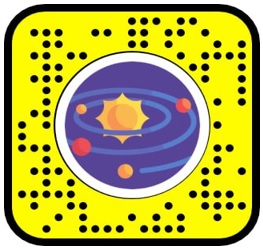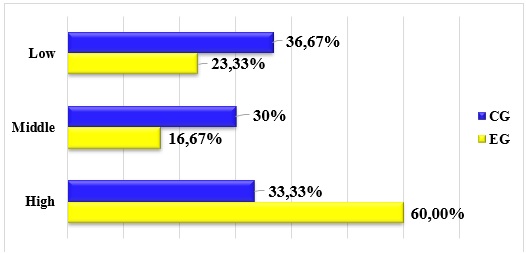Abstract. The study analyzed the problem of using virtual reality technologies in the educational field in the context of today's modern challenges. An experimental study was conducted at preschool education institutions and modern approaches to the use of information and communication technologies in the professional activities of future specialists of preschool education institutions were introduced.
Keywords: preschool education, safe educational environment, preschool child, AR technologies.
Statement of the problem and its connection with important tasks. In today's conditions, the educational system in Ukraine is undergoing significant transformations. Rapid changes are taking place in society and the world, which give rise to new requests and require fundamentally new approaches to solving the tasks of our time. The current situation in the country and the COVID-19 pandemic have had a strong impact on the education system. A safe educational environment became a priority, which includes conditions created by the educational institution, a clear plan of action in crises, availability of Internet access, etc.
The main challenge for the Ukrainian education system was the need to reconsider strategic approaches that require innovative solutions in the organization of the educational process. The implemented distance learning form made it possible to apply new technological solutions and a differentiated approach, allowing to expand the educational toolkit and providing it with elements of facilitation.
Digitization of education has become one of the key stages for informatization of society. Saturation of the educational environment with digital devices, innovative teaching tools, and coverage with a high-quality Internet network will form a high-quality educational space. [1]. Let us turn to the Ukrainian encyclopedic dictionaries, where digital competence is considered as the ability to meaningfully and critically apply the technologies of the digital society, known as Information Society Technology (IST), to fulfill professional duties, organize leisure time, and conduct communication [2].
In this regard, it was necessary to conduct an experimental study among students of higher education at T.H.Shevchenko National University Chernihiv Colehium, specialty 012 Preschool education, Master’s degree, in the process of their educational and pedagogical and vocational training and specialists of preschool education institutions on the use of AR technologies in the educational process of preschool education institutions.
Analysis of the research. The feasibility of addressing the selected problem is confirmed by a number of regulatory documents (laws of Ukraine "On Education," "On Preschool Education," "On Higher Education," "On Childhood Protection," the Concept of Security of Educational Institutions for 2023-2025, the Concept of Development of Digital Competencies, The Law of Ukraine "On Amendments to Some Laws of Ukraine Regarding the Functioning of Integrated Information Systems in the Field of Education."
Presentation of the main material. According to O.Strutynska and
M.Umryk, such a transformation opens up wide prospects for increasing the efficiency of the educational process, the goal of which is the formation of end-to-end skills and digital competence of the individual. The key resource of society is citizens who know how to effectively and productively use information technologies for their own needs, as well as to achieve common economic, social and public goals [3].
As for the preschool sphere, the issue of transformation is directly related to digitalization. Several applications have now been implemented for the full-fledged education of preschool children. This is ZOOM, a platform that allows you to connect many people at the same time, regardless of their location. The platform has a wide range of tools to ensure that classes have an integrated character. Google Classroom is a platform that allows children to be assigned tasks in real time but requires the involvement of parents in the educational process [4, 5].
Make IT is a computer program for learning through a game. It allows you to involve every student in learning, regardless of where they are. It is enough to have a personal electronic device and a program installed on it. In their turn, preschool educators can create educational material, visualizing it according to the educational program for children and providing them with access to the game/test with the ability to track their progress.
Tiny Tap is an application for smart devices aimed at creating innovative educational materials for preschool children. Materials created based on this application are more effective and have a certain uniqueness. In this case, the emphasis is on the elements of gamification, which serve as auxiliary aspects in the development of critical thinking, active speech, logical-mathematical thinking, orientation in colors, etc.
Blockchain - technologies aimed at working with students of higher education and in the conditions of requests of modern society, in which digitization is progressing. In this way, a competitive society will be formed, which is a good solution in the conditions of distance learning.
In the course of an experimental study, an innovative educational manual for future preschool education specialists "Stars on Earth" was created, which became a reflection of our belief that "every child is unique, every child is gifted!" The process of developing the manual included an important stage - a theoretical analysis of psychological and pedagogical literature and drawing parallels with modern problems in the field of preschool education, on the basis of which the content and basic concept were created.
To verify the effectiveness of the developed materials for the pedagogical training of future preschool education specialists to work with preschool children, 70 internal and extramural Master's degree students were selected, including 32 students from the experimental group and 38 students from the control group. The students of the control group had an educational (pedagogical) practice at preschool education institutions according to the traditional program, which did not include the introduction of developed materials and the testing of methodological developments in groups of preschool children into the educational process, while the students of the experimental group took a direct part in the process of implementing the above-mentioned conditions in the formative stage of the experiment.
Students of higher education during the internship at a higher education institution (who were part of the experimental group) actively implemented methodical developments and ideas that were proposed in the training manual. The use of virtual reality technologies has expanded the possibilities for improving the educational landscape. IT technologies and, in particular, the software "Lens Studio" aimed at the design of filters for mobile applications, allowed us to create an AR application that successfully functions on the basis of "Snapchat."
The application is supported by mobile devices with the operating system IOS or Android. This application was offered to be tested by the students of the experimental group. The AR application was created for educational purposes, aimed at the study of astronomical objects by children of preschool age. To run it, you need to:
1. Open Snapchat and point the camera at the snap code;
2. Tap and hold on to the snap code to scan it.
Augmented reality technologies make it possible to modernize and add elements of interactivity to the educational process. Complex information can be conveyed playfully, successfully visualizing it precisely with the help of IT technologies. Our filter visually demonstrates the solar system with the opportunity to learn more about each of the planets.
Attention is also focused on the interactivity of tasks, animated models of astronomical objects, and embedded an educational information and explains in detail various aspects of astronomy. The filter was developed taking into account modern trends in education, as well as the age of students of preschool education institutions. Pedagogical approaches that were integrated into the application showed successful results. Children of senior preschool age better perceived the information received using AR technologies than those children whose class was visualized exclusively with didactic materials.
Fig. 1.1 Comparative results of students of the experimental and control groups regarding the successful application of AR technologies and the ideas of the developed and proposed educational manual "Stars on Earth" at the control stage of the experiment (in %)
In the conditions of distance learning, these technologies simplify the work of preschool teachers, because classes can be held from anywhere in the world where there is access to the Internet and help children acquire new knowledge, regardless of their complexity and situation, as well as study complex concepts in the context of an interactive educational landscape.
So, thanks to the approbation of the "Stars on Earth" training manual by future preschool education specialists, the following results were achieved in the process of practical training within the walls of preschool education institutions:
- the base of fundamental knowledge about modern problems of preschool education and models of their solution in today's conditions was expanded and deepened;
- the system of theoretical and practical knowledge acquired by students on information and communication technologies and the possibilities of their application in working with preschool children has been improved;
- the motivational component has been improved.
Further research is planned to be focused on the assessment of the long-term impact of educational technologies on the educational achievements and development of preschoolers.
References:
1. Morze N., Kucherovska V., Smyrnova-Trybulska E. Samootsiniuvania rivnia tsyfrovizatsii osvitnioho zakladu za umov transformatsii serednioii osvity. [Self-assessment of the level of digitalization of an education institution under the conditions of transformation of secondary education]. Electronic scientific publication "Open educational e-environment of a modern university", 2020. No. 8, pp. 72–87. DOI: https://doi.org/10.28925/2414-0325.2020.8.8.
2. Tsyfrova kompetentnist vchytelia DigCompEdu. Dystantsiina osvita. Bloh pro dystantsiine navchania ta zmishane navchania informatyky. Tekhnolohii ta systemy dystantsiinoho navchania. [DigCompEdu teacher's digital competence. Distance education. Blog about distance and mixed learning of Information Studies. Distance learning technologies and systems]. Moodle. URL: https:// www: http://dystosvita.blogspot.com/2018/04/digcompedu.html. (date of application: 02.06.2024).
3. Strutynska O.V., Umryk M.A. (2020) Suchasni osvitni trendy v umovakh rozvytku tsyfrovoho suspilstva [Modern educational trends in the development of digital society]. Innovative pedagogy. 26. 201–205. [in Ukrainian].
4. Vasyl Shunkov, Olena Shevtsova, Valentyn Koval, Tetiana Hryhorenko, Liudmyla Yefymenko, Yuliia Smolianko, Oleksandr Kuchai. [Prospective Directions of Using Multimedia Technologies in the Training of Future Specialists]. IJCSNS International Journal of Computer Science and Network Security, Vol.22 No. 6, June 2022. P. 739-746.
5. Y. M. Smolianko. Stvorenia navchalno-metodychnykh resursiv u protsesi mahisterskoii pidhotovky maibutnikh fakhivtsiv doshkilnoii osvity. Molod, osvita, nauka, kultura i natsionalna samosvidomist v umovah yevropeiskoii intehratsii. [Creation of educational and methodical resources in the process of master's training of future specialists of preschool education. Youth, education, science, culture and national self-awareness in the conditions of the European integration]. Coll. materials XXIII All-Ukrainian. science - practice conference, Kyiv, April 28, 2020; / Editor: I.I. Tymoshenko (rep. ed.) and others. K.: Publication of the European University, 2020. P. 47-49.
|









